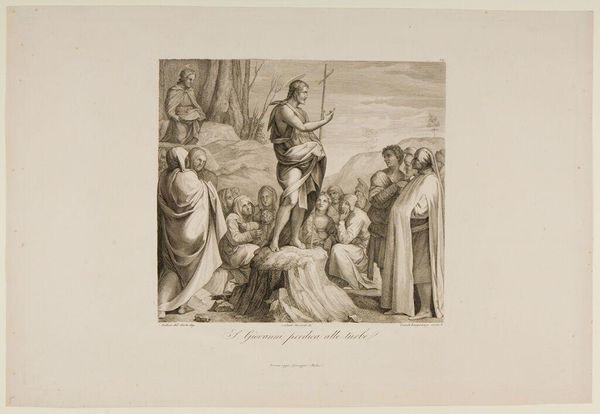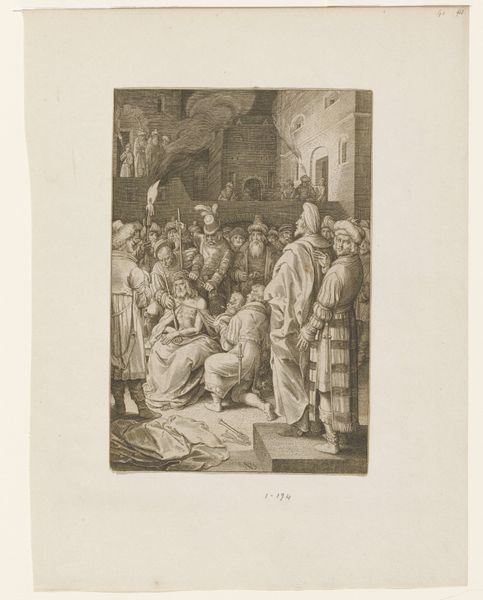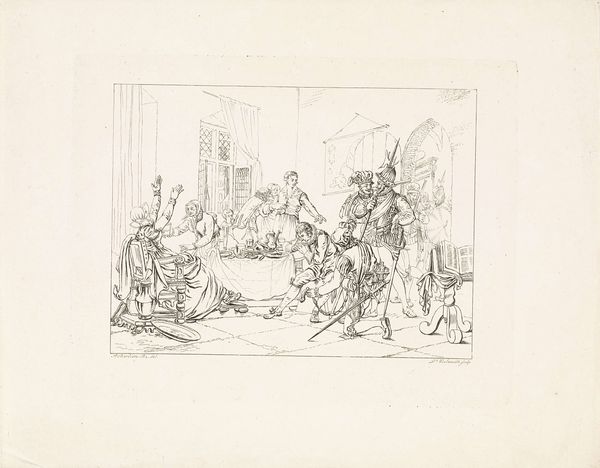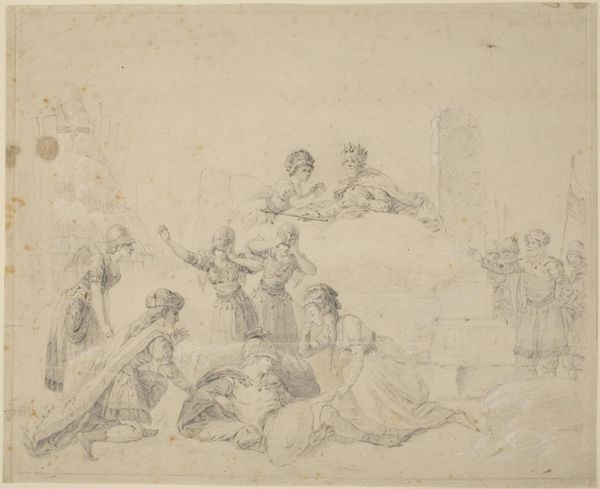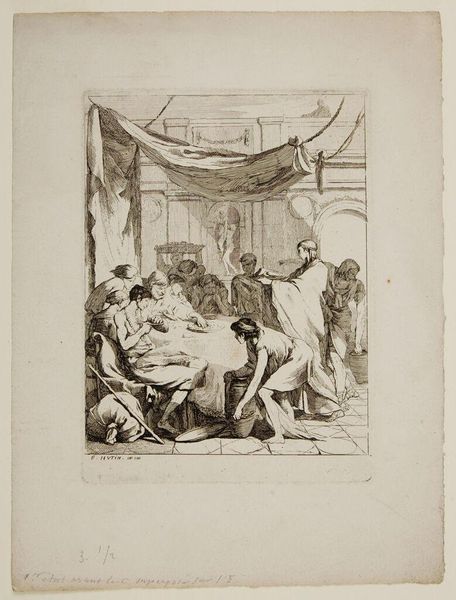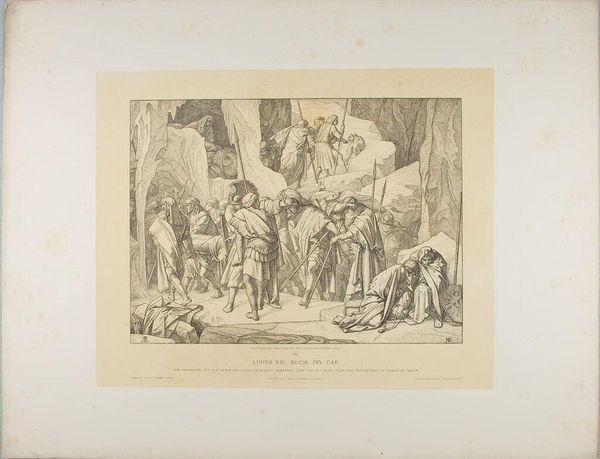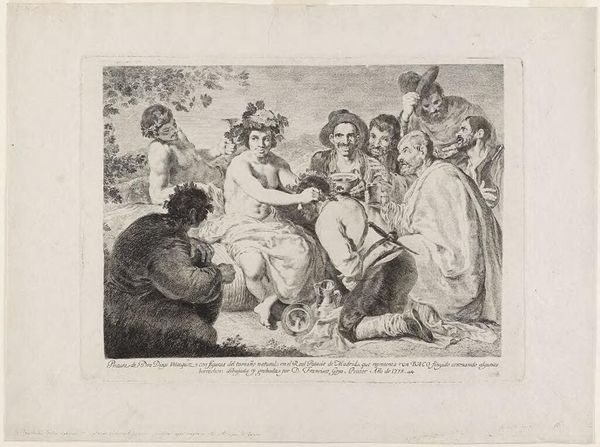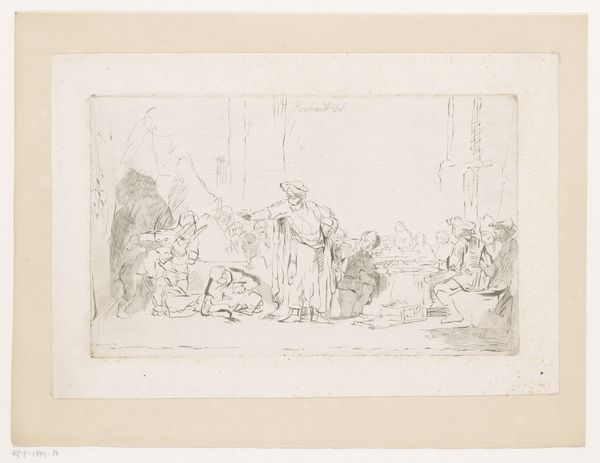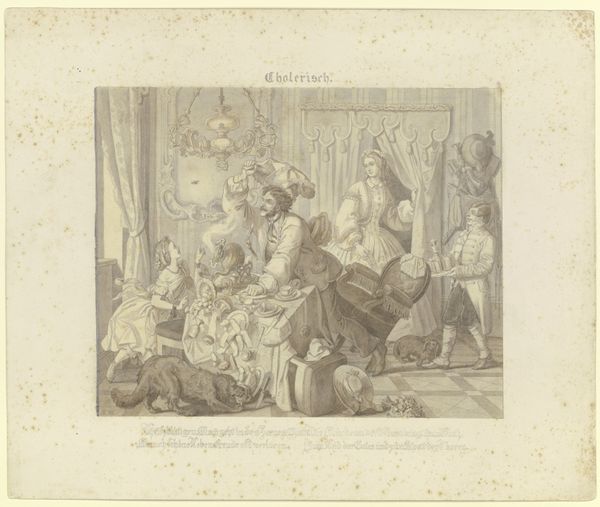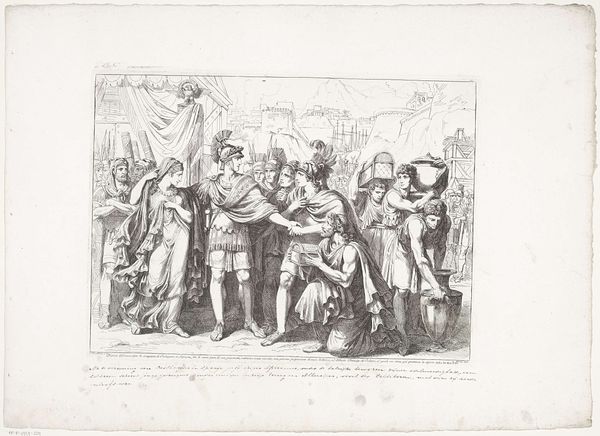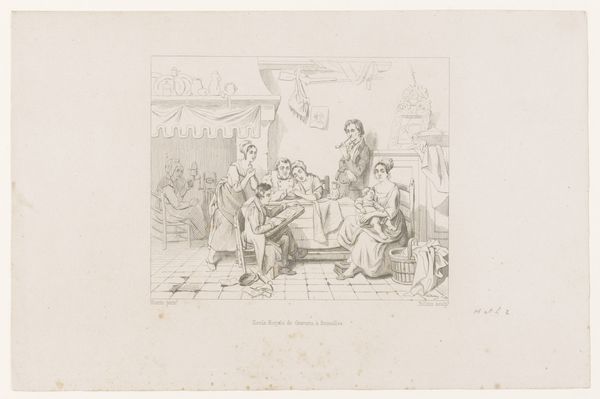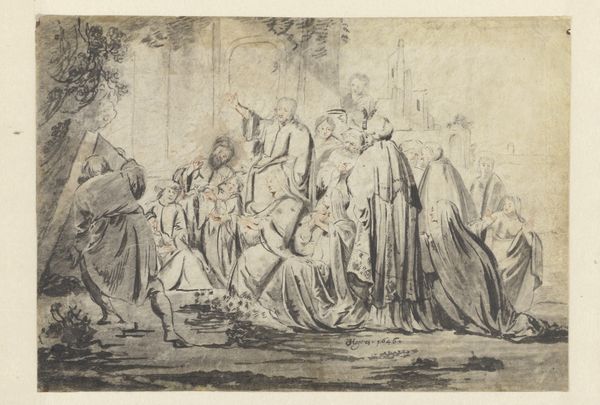
Copyright: CC0 1.0
Curator: Joseph von Führich's "Marriage at Cana" presents a biblical scene rendered in meticulous detail. What strikes you first about the visual composition? Editor: The starkness—the limited tonal range creates a powerful, almost austere mood. It draws attention to the labor involved, the very act of depicting the unseen miracle, and to the materiality of the water jugs. Curator: Indeed. The linearity and precise rendering foreground a complex interplay of gazes and gestures. Observe how the figures are arranged, directing our eyes towards the central miracle. It's a study in human reaction to the divine. Editor: But even the divine is rendered through the labor of the pourer, the tangible act of transformation. The materiality of the jugs suggests a grounding of the spiritual in the everyday work of the common person. Curator: A compelling thought. I see a balance between the spiritual and the representational, achieved through Füriich's masterful draftsmanship and arrangement of the scene. Editor: Perhaps. But for me, it's the emphasis on the physical processes that elevates it beyond mere representation. It’s about faith made material. Curator: A stimulating discussion. It's fascinating how a seemingly straightforward depiction opens itself up to multiple interpretations, highlighting the beauty of art's inherent ambiguity. Editor: Yes, a reminder that art often reveals as much about the act of creation as the subject itself, forcing us to consider how our material world shapes our understanding of the spiritual.
Comments
No comments
Be the first to comment and join the conversation on the ultimate creative platform.
